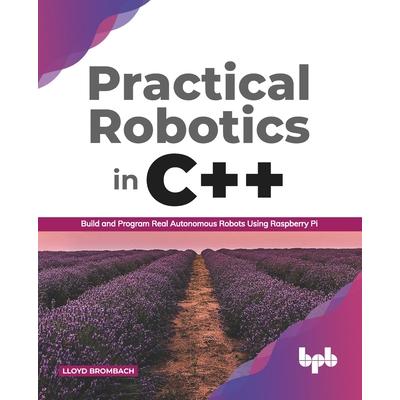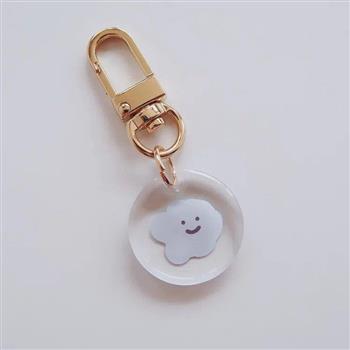Practical Robotics in C++
Practical Robotics in C++
內容簡介
Learn how to build and program real autonomous robots
Key FeaturesSimplified coverage on fundamentals of building a robot platform.Learn to program Raspberry Pi for interacting with hardware.Cutting-edge coverage on autonomous motion, mapping, and path planning algorithms for advanced robotics. Description Practical Robotics in C++ teaches the complete spectrum of Robotics, right from the setting up a computer for a robot controller to putting power to the wheel motors. The book brings you the workshop knowledge of the electronics, hardware, and software for building a mobile robot platform. You will learn how to use sensors to detect obstacles, how to train your robot to build itself a map and plan an obstacle-avoiding path, and how to structure your code for modularity and interchangeability with other robot projects. Throughout the book, you can experience the demonstrations of complete coding of robotics with the use of simple and clear C++ programming. In addition, you will explore how to leverage the Raspberry Pi GPIO hardware interface pins and existing libraries to make an incredibly capable machine on the most affordable computer platform ever. What will you learn Write code for the motor drive controller. Build a Map from Lidar Data. Write and implement your own autonomous path-planning algorithm. Write code to send path waypoints to the motor drive controller autonomously. Get to know more about robot mapping and navigation.
Who this book is for This book is most suitable for C++ programmers who have keen interest in robotics and hardware programming. All you need is just a good understanding of C++ programming to get the most out of this book. Table of Contents1. Choose and Set Up a Robot Computer
2. GPIO Hardware Interface Pins Overview and Use
3. The Robot Platform
4. Types of Robot Motors and Motor Control
5. Communication with Sensors and other Devices
6. Additional Helpful Hardware
7. Adding the Computer to Control your Robot
8. Robot Control Strategy
9. Coordinating the Parts
10. Maps for Robot Navigation
11. Robot Tracking and Localization
12. Autonomous Motion13. Autonomous Path Planning
14. Wheel Encoders for Odometry
15. Ultrasonic Range Detectors
16. IMUs: Accelerometers, Gyroscopes, and Magnetometers
17. GPS and External Beacon Systems
18. LIDAR Devices and Data
19. Real Vision with Cameras
20. Sensor Fusion
21. Building and Programming an Autonomous Robot
About the Author Lloyd Brombach is a controls engineer, programmer, and long-time electronics and robotics enthusiast. He has competed at robotics events such as the NASA-funded 2007 Lunar Regolith Excavation Challenge and recently the 27th Intelligent Ground Vehicle Challenge. He is committed to making contributions to the robotics field that future roboticists and robot-owners will benefit from for years to come. Facebook Profile: www.facebook.com/practicalrobotics
Youtube: www.youtube.com/practicalrobotics
LinkedIn Profile: https: //www.linkedin.com/in/lbrombach
Key FeaturesSimplified coverage on fundamentals of building a robot platform.Learn to program Raspberry Pi for interacting with hardware.Cutting-edge coverage on autonomous motion, mapping, and path planning algorithms for advanced robotics. Description Practical Robotics in C++ teaches the complete spectrum of Robotics, right from the setting up a computer for a robot controller to putting power to the wheel motors. The book brings you the workshop knowledge of the electronics, hardware, and software for building a mobile robot platform. You will learn how to use sensors to detect obstacles, how to train your robot to build itself a map and plan an obstacle-avoiding path, and how to structure your code for modularity and interchangeability with other robot projects. Throughout the book, you can experience the demonstrations of complete coding of robotics with the use of simple and clear C++ programming. In addition, you will explore how to leverage the Raspberry Pi GPIO hardware interface pins and existing libraries to make an incredibly capable machine on the most affordable computer platform ever. What will you learn Write code for the motor drive controller. Build a Map from Lidar Data. Write and implement your own autonomous path-planning algorithm. Write code to send path waypoints to the motor drive controller autonomously. Get to know more about robot mapping and navigation.
Who this book is for This book is most suitable for C++ programmers who have keen interest in robotics and hardware programming. All you need is just a good understanding of C++ programming to get the most out of this book. Table of Contents1. Choose and Set Up a Robot Computer
2. GPIO Hardware Interface Pins Overview and Use
3. The Robot Platform
4. Types of Robot Motors and Motor Control
5. Communication with Sensors and other Devices
6. Additional Helpful Hardware
7. Adding the Computer to Control your Robot
8. Robot Control Strategy
9. Coordinating the Parts
10. Maps for Robot Navigation
11. Robot Tracking and Localization
12. Autonomous Motion13. Autonomous Path Planning
14. Wheel Encoders for Odometry
15. Ultrasonic Range Detectors
16. IMUs: Accelerometers, Gyroscopes, and Magnetometers
17. GPS and External Beacon Systems
18. LIDAR Devices and Data
19. Real Vision with Cameras
20. Sensor Fusion
21. Building and Programming an Autonomous Robot
About the Author Lloyd Brombach is a controls engineer, programmer, and long-time electronics and robotics enthusiast. He has competed at robotics events such as the NASA-funded 2007 Lunar Regolith Excavation Challenge and recently the 27th Intelligent Ground Vehicle Challenge. He is committed to making contributions to the robotics field that future roboticists and robot-owners will benefit from for years to come. Facebook Profile: www.facebook.com/practicalrobotics
Youtube: www.youtube.com/practicalrobotics
LinkedIn Profile: https: //www.linkedin.com/in/lbrombach
配送方式
-
台灣
- 國內宅配:本島、離島
-
到店取貨:
不限金額免運費



-
海外
- 國際快遞:全球
-
港澳店取:


訂購/退換貨須知
加入金石堂 LINE 官方帳號『完成綁定』,隨時掌握出貨動態:
商品運送說明:
- 本公司所提供的產品配送區域範圍目前僅限台灣本島。注意!收件地址請勿為郵政信箱。
- 商品將由廠商透過貨運或是郵局寄送。消費者訂購之商品若無法送達,經電話或 E-mail無法聯繫逾三天者,本公司將取消該筆訂單,並且全額退款。
- 當廠商出貨後,您會收到E-mail出貨通知,您也可透過【訂單查詢】確認出貨情況。
- 產品顏色可能會因網頁呈現與拍攝關係產生色差,圖片僅供參考,商品依實際供貨樣式為準。
- 如果是大型商品(如:傢俱、床墊、家電、運動器材等)及需安裝商品,請依商品頁面說明為主。訂單完成收款確認後,出貨廠商將會和您聯繫確認相關配送等細節。
- 偏遠地區、樓層費及其它加價費用,皆由廠商於約定配送時一併告知,廠商將保留出貨與否的權利。
提醒您!!
金石堂及銀行均不會請您操作ATM! 如接獲電話要求您前往ATM提款機,請不要聽從指示,以免受騙上當!
退換貨須知:
**提醒您,鑑賞期不等於試用期,退回商品須為全新狀態**
-
依據「消費者保護法」第19條及行政院消費者保護處公告之「通訊交易解除權合理例外情事適用準則」,以下商品購買後,除商品本身有瑕疵外,將不提供7天的猶豫期:
- 易於腐敗、保存期限較短或解約時即將逾期。(如:生鮮食品)
- 依消費者要求所為之客製化給付。(客製化商品)
- 報紙、期刊或雜誌。(含MOOK、外文雜誌)
- 經消費者拆封之影音商品或電腦軟體。
- 非以有形媒介提供之數位內容或一經提供即為完成之線上服務,經消費者事先同意始提供。(如:電子書、電子雜誌、下載版軟體、虛擬商品…等)
- 已拆封之個人衛生用品。(如:內衣褲、刮鬍刀、除毛刀…等)
- 若非上列種類商品,均享有到貨7天的猶豫期(含例假日)。
- 辦理退換貨時,商品(組合商品恕無法接受單獨退貨)必須是您收到商品時的原始狀態(包含商品本體、配件、贈品、保證書、所有附隨資料文件及原廠內外包裝…等),請勿直接使用原廠包裝寄送,或於原廠包裝上黏貼紙張或書寫文字。
- 退回商品若無法回復原狀,將請您負擔回復原狀所需費用,嚴重時將影響您的退貨權益。










商品評價